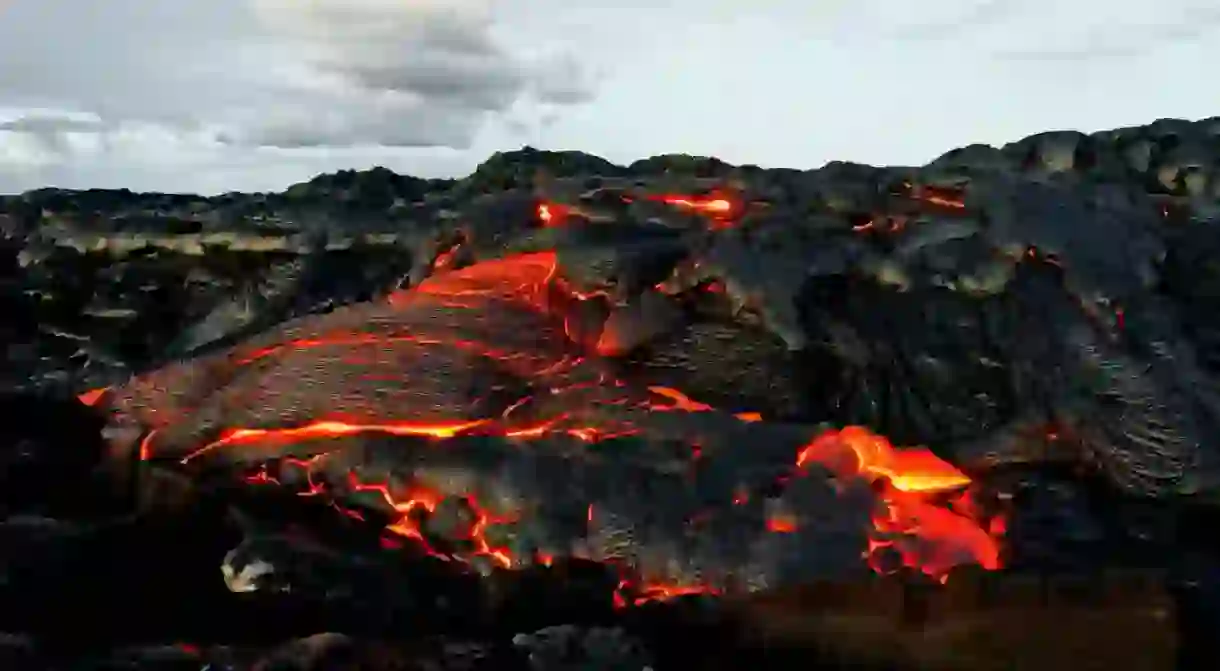Hawaii’s Erupting Volcano Just Created a New Island

The Kilauea volcanic eruption continues to create a natural disaster in parts of Hawaii. However, it’s also miraculously created a tiny new island in the process.
While the eruption of Mount Kilauea wreaked destruction across the island of Hawaii, it also spurred an unlikely moment of creation. Off of the northern coast of the Big Island, a small new island formed and is believed to be the result of the lava flow.
https://www.instagram.com/p/BlMiXd1DW2R/?hl=en&tagged=kilauea
A crew from the Hawaiian Volcano Observatory noticed the new landmass during a flyover on July 12, 2018. Since then, the United States Geological Survey documented the existence of this new landmass, which is only about six to eight meters (19.6–26.2 feet) long and three meters (9.8 feet) from the shore.
Most geologists believe the island is a result of a submarine tumulus—an event in which molten lava flowing underground creates pressure that raises the Earth’s crust. Others think it resulted from lava that spurted through the water and then cooled to form the new landmass. Despite the variety of theories, a newborn baby island in Hawaii created from hot lava is perhaps the most exciting result of the volcano eruptions to date. The mass itself is essentially a black rock that perpetually oozes hot lava.

This new island is the least of the geographical alterations caused by the eruptions of the Kilauea volcano, which have been going on for over two months. Over 12 square miles (31 square kilometers) of the island of Hawaii were covered by the rivers of molten rock, destroying over 700 homes. At the same time, over 700 acres have been added to the island as lava has flowed into areas like Kapaho Bay, expanding the coastline into spaces that were once water.
https://www.instagram.com/p/BlLpNu3HrzS/?hl=en&tagged=kilauea
While this new island came to be rather quickly, it could just as suddenly disappear—either from joining the land or slipping into the sea. The lava channel will continue to fill in, becoming a part of the Big Island, or the seas will gradually erode it. It is certainly not the greatest change brought about by the Kilauea volcano, nor is it likely to be the last.













